Ants of Arizona: A Glimpse
Arizona wasn’t always a prime target on my travel list. However, that all changed last year when I heard about the “Ants of the Southwest” course offered at the Southwestern Research Station near Portal, AZ. This course would teach essential myrmecology skills to an eclectic group of keen enthusiasts while sampling some of the 350 local ant species. It would also bring us to a range of habitats across an impressive altitudinal gradient; from the Chihuahuan Desert floor to the sky islands of the Sierra Madre. I now had to go to Arizona. Thus, I attended the 2018 edition of the course, which was hosted by Michelle Lanan, Clint Penick, and Christina Kwapich. Here are some of my favorite ant (and other
A Photoblog contribution by François Brassard

Please note: All pictures are copyright by François Brassard (© François Brassard)
Nested in the mountains, the Southwestern Research Station harbors a mixture of ant species typically found in temperate forests or arid habitats.
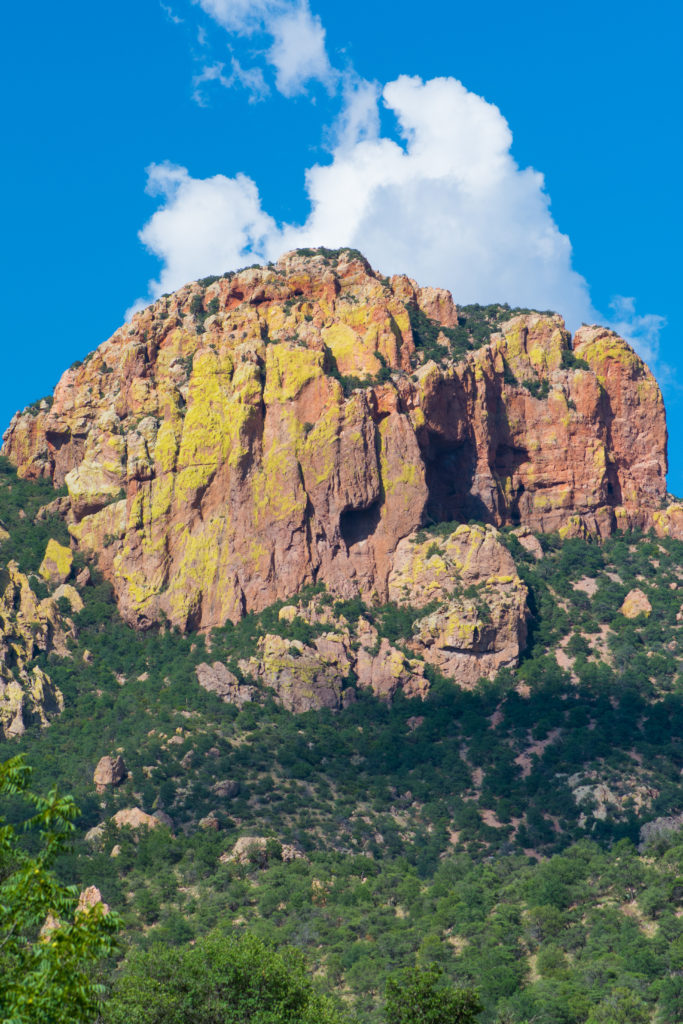
Emblematic Ant Species
Here is a portrait of a harvester ant (Pogonomyrmex sp.). You can observe these charismatic ants in arid areas of the American Southwest. However, beware of their painful sting.
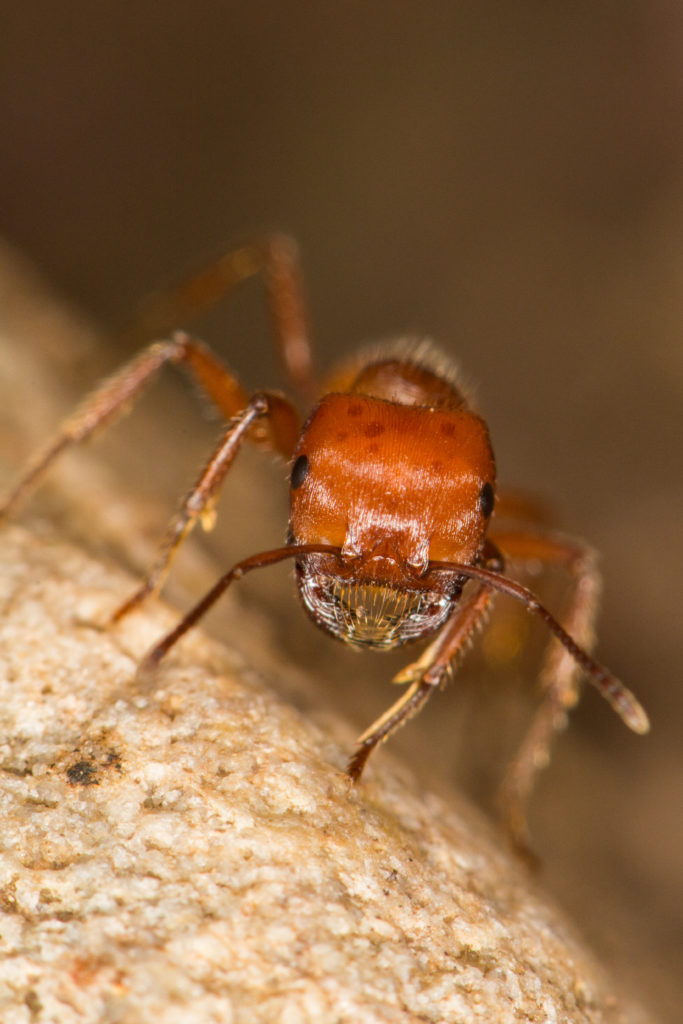
Ants in the genus Pogonomyrmex have long coarse hairs (i.e.

Ants in the genus Acromyrmex are true leaf-cutters that grow fungus within their nests. However, unlike the more well-known Atta ants, they prefer flowers and fruits to leaves. This leaf-cutter (Acromyrmex versicolor) is distinct from other Acromyrmex species since it inhabits deserts, whereas most species inhabit moist tropical forests.

Despite being one of the most widespread ant genera in the world, Monomorium often go unnoticed because of their small size (i.e. 1 – 2 mm).

Here is a portrait of a winnow ant (Aphaenogaster sp.) on a dry riverbank. These ants have an almost worldwide distribution and vary extensively in their morphology. However, North American species can be distinguished by their long head, elongate mesonotum and poorly defined antennal club. Some species are important dispersers of seeds bearing elaiosomes, a process known as myrmecochory.

Acrobat ants (Crematogaster) are easily identified by their heart-shaped gasters. These dozens of workers were making a meal out of a large caterpillar that fell on the desert floor.

Honeypot ants (Myrmecocystus sp.) are found in arid areas of the U.S. and Mexico. They are well known for the ability of workers to store sweet liquids.
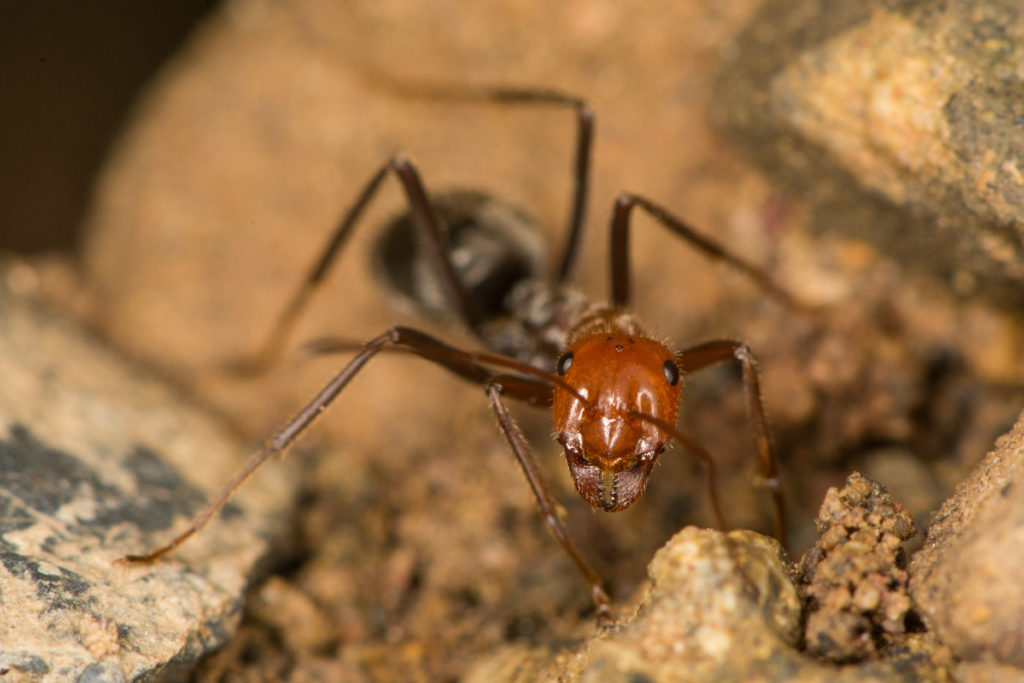
While visiting Ray Mendez’s workshop, he gave us an inside look of a honeypot ant colony (Myrmecocystus sp.). The workers with


Carpenter ants are polymorphic; they have multiple worker castes with distinct morphologies. This major and minor worker of Camponotus sp. (notice the larger head of the major) were feeding on a tree baited with honey.
The genus Dorymyrmex can be readily recognized from other dolichoderines by its pointy propodeum. Like all ants within the Dolichoderinae subfamily, they do not have a sting, but instead have anal glands that produce a strong odor, sometimes compared to the smell of blue cheese.

Citronella ants (Lasius sp.) are less conspicuous than more familiar Lasius species because of their more subterranean habits. However, if you’re lucky, you may find a nest of these golden-colored ants by lifting a few rocks in deciduous and mixed forests.

The genus Lasius is very common across the Holarctic. However, they can also be found in the American Southwest in the coniferous forests located at higher altitudes. This worker is picking up eggs to relocate them after her nest was disturbed.

Ants in the genus Nylanderia are generalist feeders that can be found almost worldwide. I found this worker foraging at night in an arid habitat.
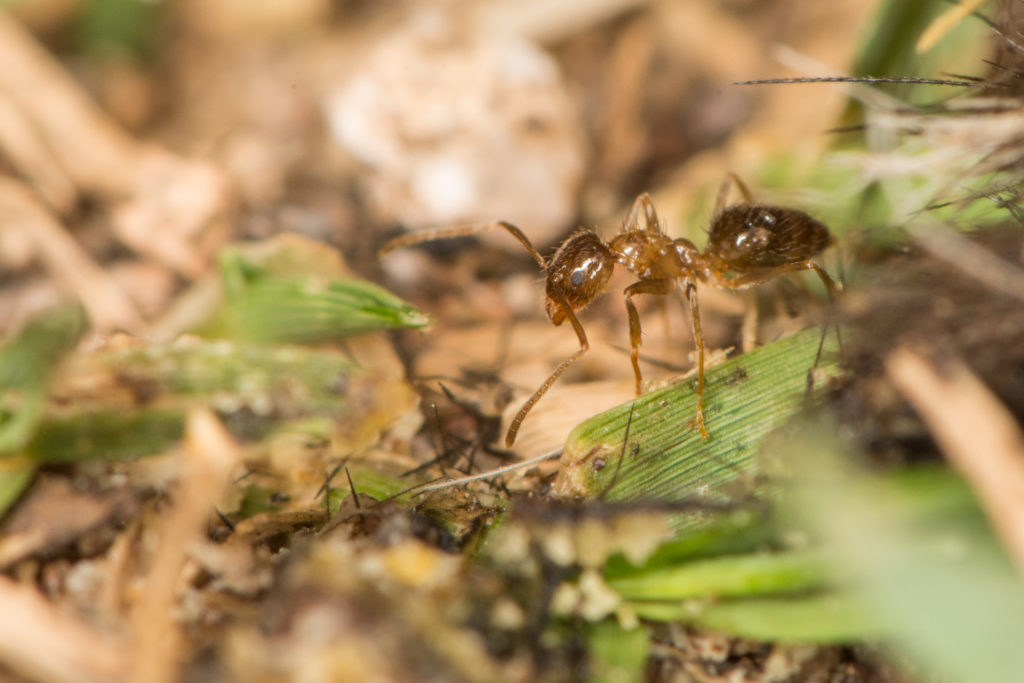
Ants, like this Novomessor on a cactus, can often be found foraging for nectar in flowers.
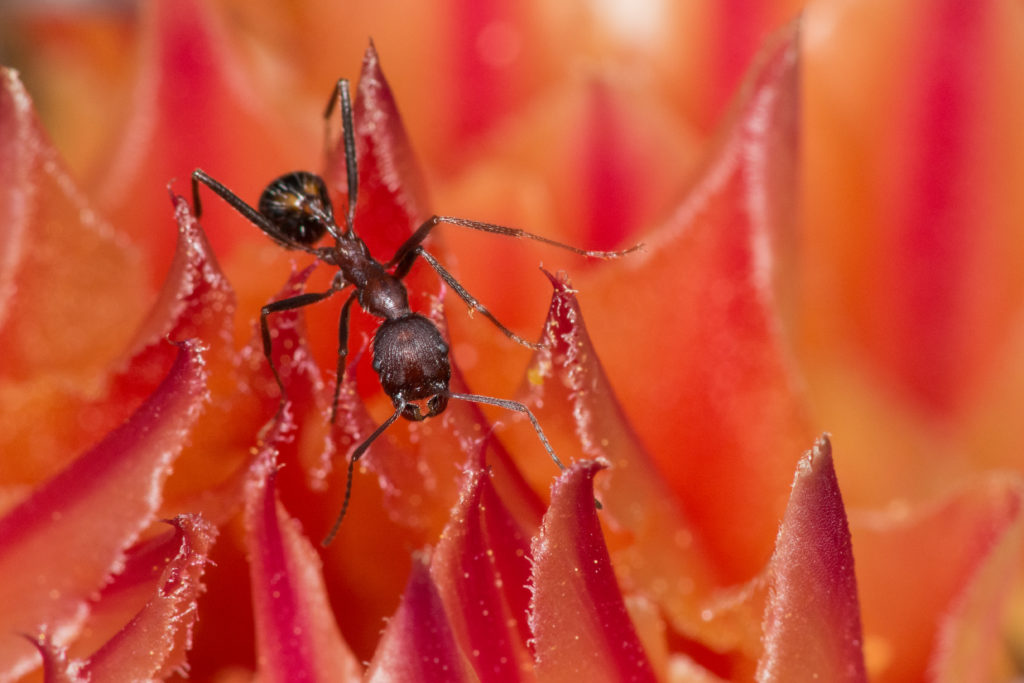
Workers of the genus Pheidole are often dimorphic, where the larger caste (i.e. majors) have disproportionately larger heads than the smaller caste (i.e. minors). In Pheidole the majors are commonly called soldiers.
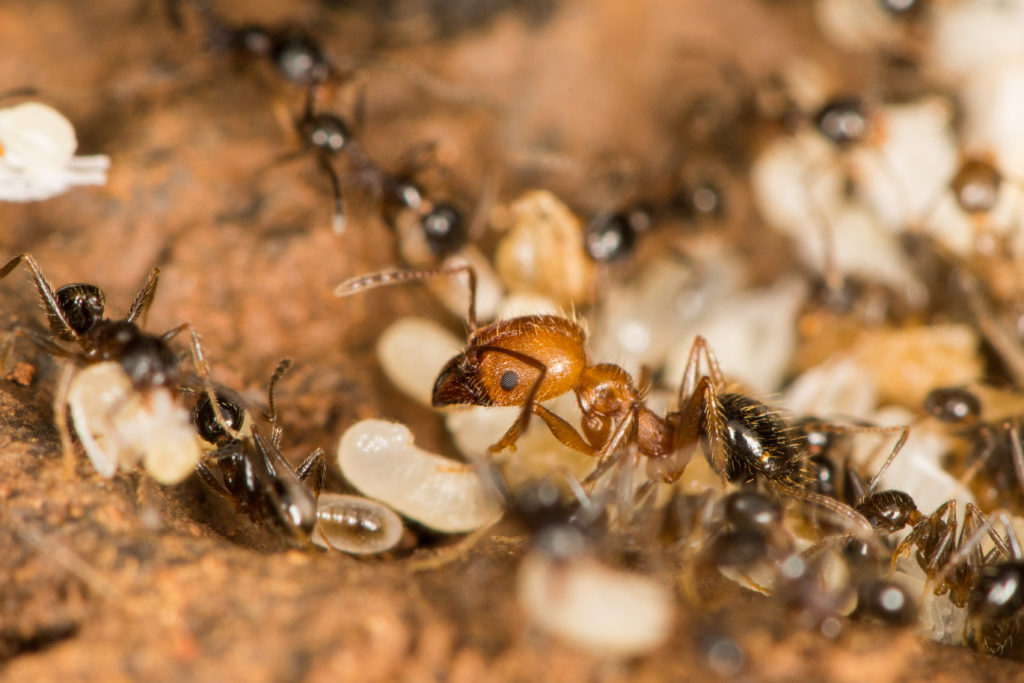
Solenopsis_sp: These Solenopsis ants were nesting under dung. Looking under dung piles can yield interesting ant species. Potentially because they offer a better buffer from the arid conditions of the desert.
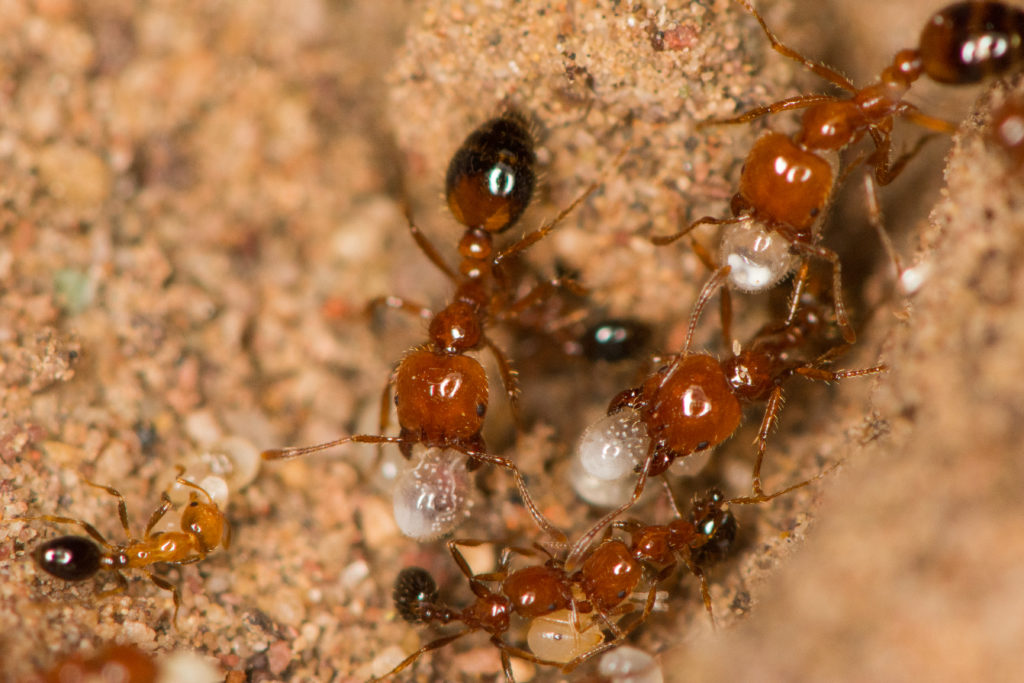
Ant-ant interactions
An ant’s fiercest competitor is often other ants. This is evident in the desert, where you can easily observe ant competing. For instance, I found these two workers, one Novomessor and one Pogonomyrmex, interacting aggressively at a nest entrance .

Army ants encompass more than 200 species across different lineages, meaning that this nomadic behaviour evolved multiple times. Here, two species of Neivamyrmex are preying upon much larger opponents (Camponotus and Pogonomyrmex) by swarming them.

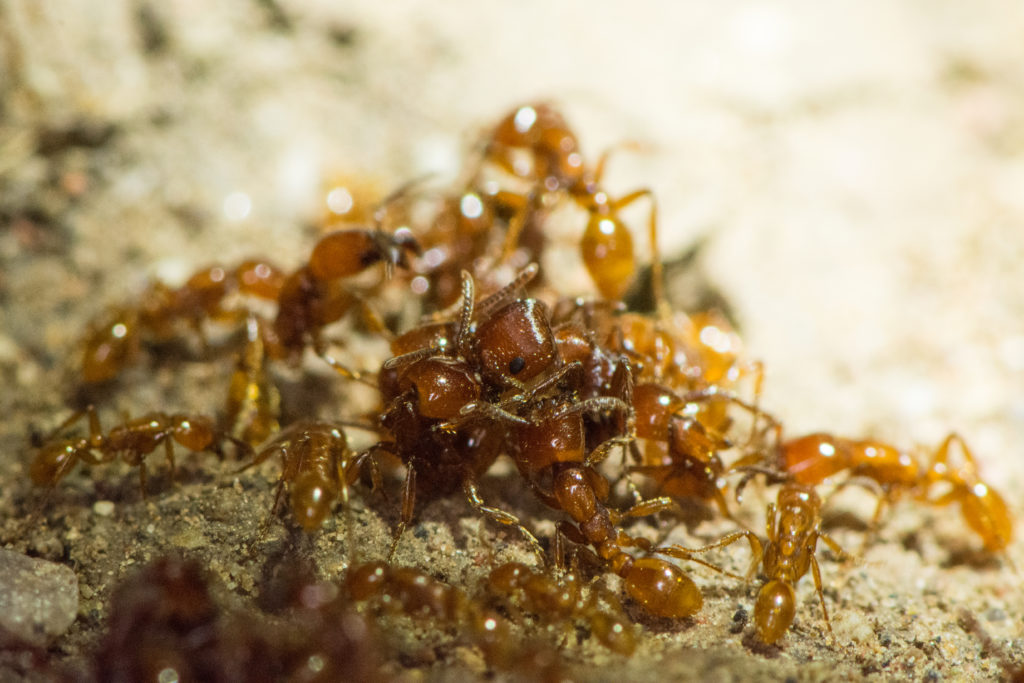
Forelius_nest_evacuation: With army ants in the surrounding area, this Forelius colony declared retreat and evacuated their nest. Even the brood and the queen were being frantically transported on the desert floor.

Interspecific competition in ants is high on the desert floor at night. In this photograph

Polyergus ants are obligate slave-makers of Formica ants. These workers were part of a raid where hundreds of Polyergus intended to steal brood from a host colony.

Ant interactions with other insects and critters
Ants love their carbohydrates. I have found this to be especially true for formicines. As such, one way to find wood ants and carpenter ants is to find plants with extrafloral nectaries, or sap-feeding insects that expel their excess sugar as honeydew. You can almost be sure to find a formicine frolicking nearby, like these Formica workers tending a scale-insect.

Caught by surprise; a jumping spider (Salticidae) is preying on a trap-jaw ant queen (Odontomachus sp.). Only a few queens succeed in founding a colony. This one did not.

Similarly, this Camponotus queen fell prey to a scorpion.
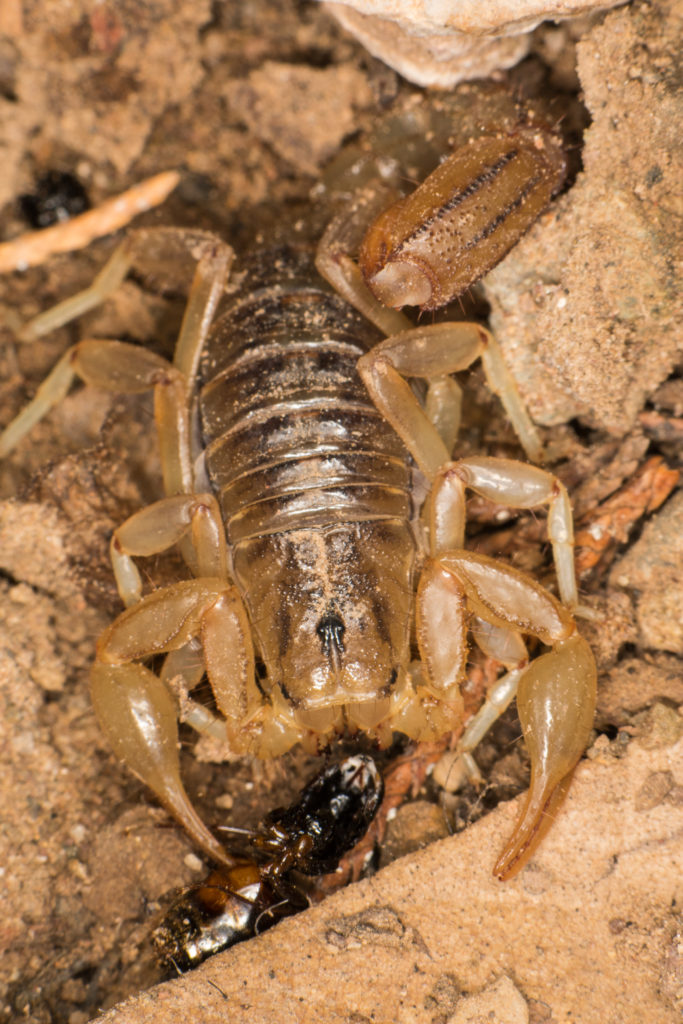
Blind snakes, also called worm snakes, are within the family Leptotyphlopidae. They are specialist predators of ants, which they find by tracking their pheromone trails.

Hundreds of Pheidole workers were crawling on this vinegaroon (whip scorpion) carcass .

Ants are sometimes called nature’s garbage collectors. Indeed, dead arthropods laying in the leaf litter rarely go unnoticed for long. Here, a Formica worker carries the remains of an isopod back to her nest.
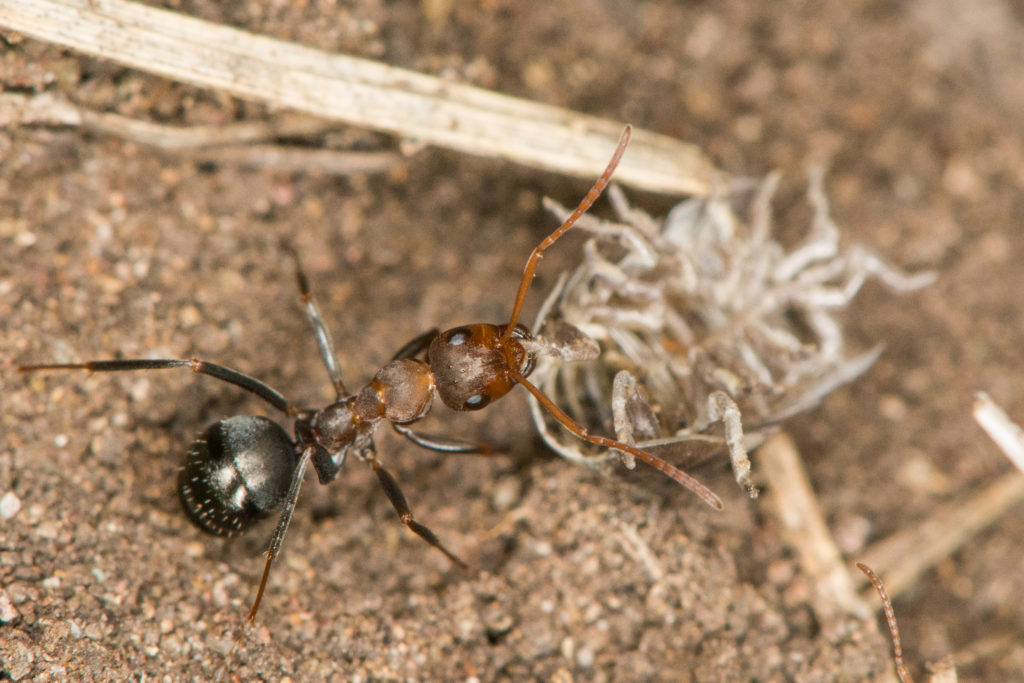
I highly recommend visiting Arizona’s diverse ecosystems, and if you are interested in myrmecology definitely look into the “Ants of the Southwest” course.




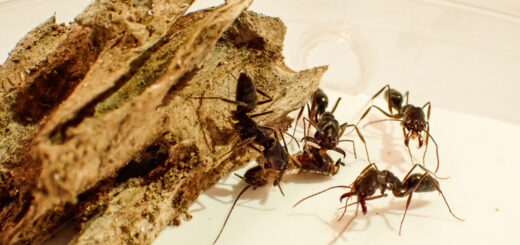
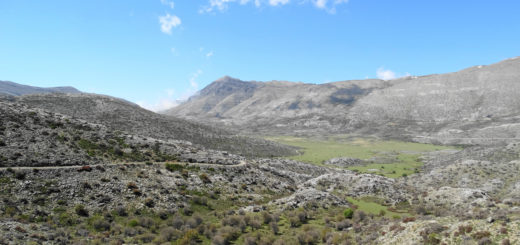

Thank you for the post and the kind words. when Michele, myself and Terry McGlynn birthed this course we were not sure how it would be received. Although not the huge draw the other “ant course” is, because of participants like you “Ants of the Southwest” has remained popular and well attended. The smaller class size means the instructors get more one on one time with students. We thank you. Unfortunately although family obligations have kept me from participating the last few years it is never far from my mind, esp during the season. Thank you.
Thank you elaborating such an amazing course Dr Snelling. It was a great experience which no doubt will positively affect the rest of my career in myrmecology!
Beautiful pictures! Thank you for showcasing some of the fabulous ants at SWRS!
Thank you!
F.Brassard: I know how difficult ant photography can be. You are EXCELLENT! I believe that some myrmecologist consider Novomyrmex now to be called Messor. Keep up the good work. Robert.
Thank you very much! I still find photographing ants extremely challenging (but equally rewarding!). And thank you for informing me about Novomyrmex now being called Messor by some myrmecologists, I was completely unaware.
It’s back to Novomessor now.
I don’t know how I missed this photo-essay, but what a walk down Memory Lane! I have participated as an instructor in both ant courses and have a great love for the ants, the biota generally, and the amazing geology of the region. Unfortunately, the one time I did the “Ants of the Southwest” course, I could not stay for the full duration. I hope some day I can make up for this.